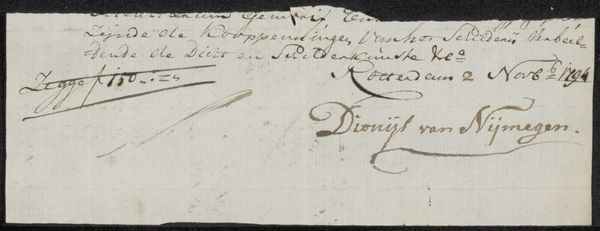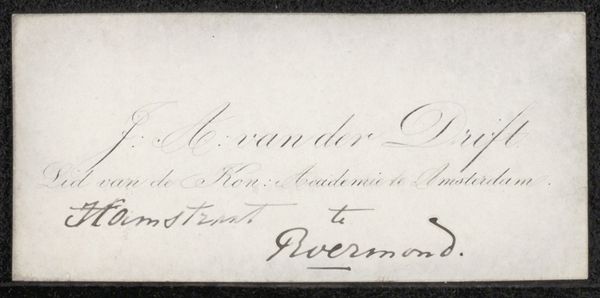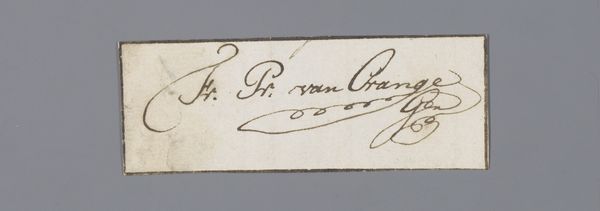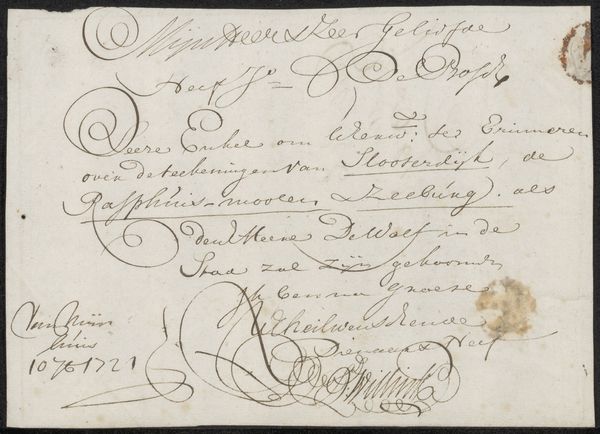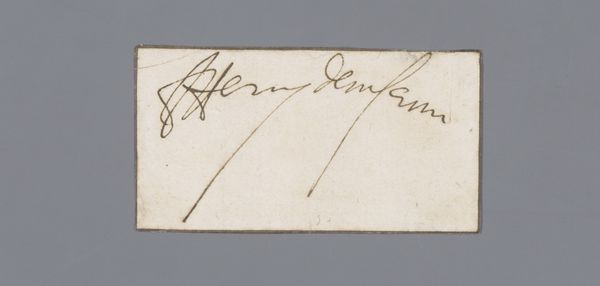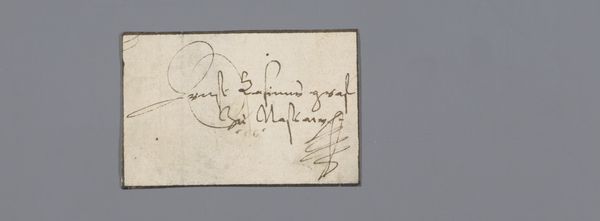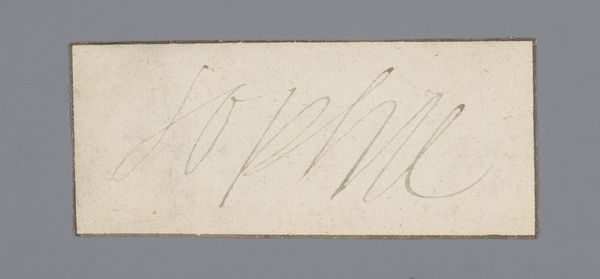
Handtekening van Hendrik Casimir II 1650 - 1700
0:00
0:00
drawing, ink
#
portrait
#
drawing
#
script typography
#
hand-lettering
#
baroque
#
hand drawn type
#
hand lettering
#
text
#
ink
#
hand-drawn typeface
#
fading type
#
stylized text
#
thick font
#
white font
#
calligraphy
#
small lettering
Dimensions: height 3.3 cm, width 10 cm
Copyright: Rijks Museum: Open Domain
This is a signature by Hendrik Casimir II, Count of Nassau-Dietz, dating back to the late 17th century, and created with ink on paper. The practice of signing one's name involves learned skill. The flow of ink across paper reflects not only the count's unique identity, but also his place within a hierarchical society. Literacy was not universal; it was a privilege of the upper classes. Even within that class, the ability to produce elegant script indicated status. The signature is quite small, but the gesture it represents is large. This was a time when a single mark could authorize immense transactions, declare war, or transfer lands. A signature was a symbolic act that made visible the workings of power. So, in this seemingly simple piece of writing, we can see a link between material, process, and social context. This challenges any hard line between fine art and the daily exercise of authority.
Comments
No comments
Be the first to comment and join the conversation on the ultimate creative platform.



